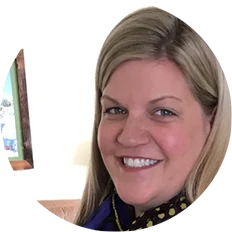“Are there actual Indians there?” This is a question I often heard when I told people that I was a teacher on the Blackfeet Indian Reservation in Browning, Montana. The first time I heard this, I was stunned. Did this person think that American Indians* no longer exist? Had he never met an American Indian? This question was beyond my reality at the time. In all transparency, I was a white female living and working on the Reservation.
Then I took a moment to reflect on what that question really illuminated. I began to think about how I taught American Indians prior to teaching in Browning. I was that teacher who focused on the whitewashed history from children’s texts about the First Thanksgiving, and that was about it for my first-grade students. The words I used to teach were marked in the past. Considering that the wars and content I studied in high school that referred to American Indians were all in the past, this was my frame of reference. If my teaching and experience are representative of typical schooling, many students in the US have only thought about American Indians within a historical context and have learned versions of that history that were written by the dominant group. So how do we help students to see that American Indians are “real” instead of teaching historical “characters” from the pages of books or seeing an inaccurate persona in Western movies?
Here are four things I recommend to educators who are looking to build a more holistic curriculum that includes the perspective and history of American Indians.
Invest in Building Your Own Understanding of American Indian History
After realizing that I had been part of perpetuating the problem, I knew that I needed to build my understanding in order to become more culturally competent. I began by looking for resources that shared an American Indian perspective such as online newspapers like Native News Online or National Native News. I read novels and history books, poetry by American Indians and visited online resources like the National Museum of the American Indian. On vacations, I made an effort to visit historical places that helped to make the history come alive such as Little Bighorn Battlefield National Monument. This work marked the beginning of my continual journey to learn more in order to be able to teach from an informed frame of reference.
I could read and study on my own but what really helped broaden and deepen my perspective was asking questions, respectfully, about cultural traditions, and the history and language of my Blackfeet colleagues and friends. At first, I was nervous to ask but found out quickly that most people were happy to share with me when framed by the fact that I was trying to build my understanding. I was always saying, “tell me more about that” or “what did your family do for____”. This opened doors and helped me to build relationships with other teachers, my students, and their families. If you do not have access to American Indian people to ask questions, check out this resource The Framework for Essential Understandings About American Indians to begin to develop your cultural competence.
Engage in Conversations About Contemporary Issues, Not Just Those of the Past
If teachers continue to look backward to teach about the rich history and cultures of American Indians, they will be missing an opportunity to shift the narrative to present-day events and issues. Thinking about current reality can be a tool to discover historical root causes and teach history from an informed perspective.
One way to teach responsibly about American Indians is to connect to current events and reality in order to share stories of American Indians that are innovating and challenging the historical narrative. One such individual is Sean Sherman, “The Sioux Chef”. His mission is to educate people about indigenous foods and support all people to rediscover “culinary culture long-buried and often inaccessible.” I think food is a language understood in all cultures and an accessible entry point.
Teachers can also incorporate contemporary authors such as Tommy Orange, Joy Harjo, and Louise Erdrich into their curriculum. If students are interested in music, they may connect with Christian Parrish Takes the Gun who goes by Supaman when performing hip hop while fancy dancing. Maybe studying contemporary issues and activist leaders resonate with students and they can study specific events through the Zinn Education Project. If you teach younger grades, read aloud books listed here are a helpful way to represent American Indians in children’s literature and often the themes can lead to deep discussions, even with young students. This is not an exhaustive list and is from the perspective of American Indians in Children’s Literature organization.
Through connections with food, stories, and music, teachers are able to engage students in topics they are interested in while sharing positive examples of modern-day American Indians to inspire and change students’ and possibly their own perceptions of American Indians.
Leverage the Available Resources
Nationally, Native Education is gaining recognition and momentum. There are a few states that both fund and require that “Native Education” is taught in the K-12 public school system. Is your state one of them? The National Council for American Indians recently released this report analyzing the efforts of states to provide Native American Education for all. Before this report was released, I sought out organizations and experts in states such as Montana, Wisconsin, Washington and Oregon that had begun to develop resources and lesson plans for teachers.
If your state does not make a formalized effort, you can still benefit from those that do. States such as Montana have a state law that requires that “every Montanan, whether Indian or non-Indian, be encouraged to learn about the distinct and unique heritage of American Indians in a culturally responsive manner….” The law and funding have supported Montana’s Office of Public Instruction in creating culturally responsive curriculum resources by and about American Indians. These resources provide teachers with an opportunity to broaden and deepen their personal understanding in order to teach from an informed point of view. The units and lessons highlight poetry and identity, traditional games, and the importance of the mathematical reasoning behind star quilts and many other interesting topics. To find all of the resources please visit OPI’s website where you can start by reading American Indians 101 Frequently Asked Questions.
Include the Cultural Capital of Families and Communities
While teaching on the Reservation, I learned quickly in order to move past being just another white educator who came “to save the Indians”, I needed to show up consistently, immerse myself within the community and not be afraid to ask questions. I had to step out of my comfort zone and be willing to connect with students and families in a way that made sense for them. That meant attending rodeos, basketball games, and cultural events. I asked community experts to share their history and cultural knowledge with me and my students during cultural days. I asked questions about cultural norms and worked towards becoming more culturally literate and responsive through small actions over time.
For teachers who have the privilege of teaching American Indian students and partnering with their families, I encourage you to look into resources from Education Northwest and especially this blog (a three-part series) written by Mandy Smoker Broaddus that shares concrete ideas about supporting a culturally responsive system for American Indian families. It is important to inform and support American Indian families in navigating the public school system. A powerful resource to share with families is The Native Youth Count Graphic which provides ideas of programs that might be able to support their children in school.
Remember that the timing of Thanksgiving might provide a good entry point into teaching about American Indians but the history since the 1900s and the contributions of American Indians should be celebrated and taught throughout the school year in ALL classrooms. If this vision were realized, perhaps the question, “Are there actual Indians there?” would be exterminated.
Knowing what I know now, I challenge teachers every day, not just in the month of November, to think about how they are exposing students to and teaching students about the complicated history of American Indians and relevant, living history. I hope that teachers can look to contemporary issues and people as a means for teaching that American Indians are STILL here and thriving, despite a system that tried to exterminate them.
*There are different terms that are often used when referring to Indian, Alaska Native, and Native Hawaiian people such as Native American, American Indian, Indigenous People, First People, and others. For this blog, I chose to use American Indian.








